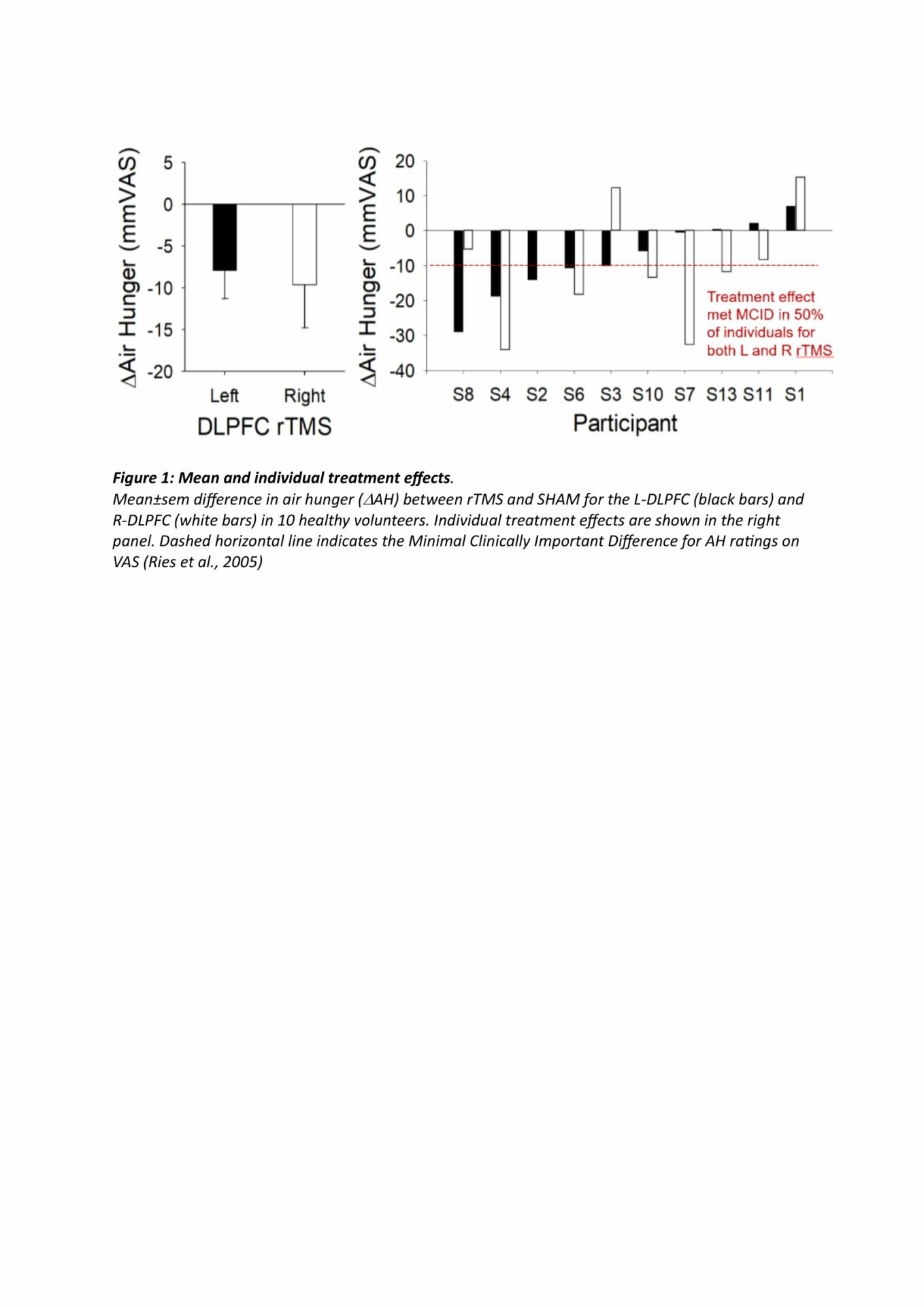Background: Use of non-invasive brain stimulation to unravel the brain mechanisms of breathlessness is a novel application that may reveal new targets for relief of intractable breathlessness thereby addressing an urgent clinical need. Similarities in brain mechanisms of pain and breathlessness are evident; both are multidimensional with physical and emotional domains. Brighina et al. (2011) showed that capsaicin-induced pain was reduced by repetitive Transcranial Magnetic Stimulation (rTMS) over the left Dorsolateral Prefrontal Cortex (L-DLPFC). We hypothesized that L-DLPFC rTMS will also relieve ‘Air Hunger’ (AH), an unpleasant component of breathlessness.
Methods: Healthy volunteers underwent breathing tests of AH (hypercapnia with constrained ventilation) before and after 5Hz rTMS over L-DLPFC, before and after 5Hz rTMS over R-DLPFC, and before and after SHAM stimulation, on three separate days in random order. Subjects rated AH on a 100mm Visual Analogue Scale (VAS) during, and completed the D-12 multidimensional dyspnoea questionnaire after, each AH test.
Results: Preliminary data from 10 healthy individuals (aged 21-53yrs; 3 female) showed significant reduction in steady-state AH after L-DLPFC rTMS (mean±sd of -17±15mmVAS; p=0.006), and after R-DLPFC rTMS (-18±22 mmVAS; p=0.04) with smaller non-significant reduction after SHAM (-9 mmVAS). Treatment effects (rTMS minus SHAM responses) for left and right DLPFC rTMS averaged -7.9 and -9.6mmVAS which are below the minimal clinically important difference of 10mmVAS. However, the treatment effect met the minimal clinically important difference for VAS ratings of AH (Ries et al., 2005) in 50% of individuals for both L and R rTMS (Figure 1). The data is currently underpowered and skewed by 2 individuals with disproportionately high SHAM responses. The physical domain of D-12 scores fell by -13, -6 and -2% full-scale for the R-DLPFC, L-DLPFC and SHAM stimulations, approaching significance only for R-DLPFC (p=0.06).
Conclusion: Unlike for pain, 5Hz rTMS of both L-DLPFC and R-DLPFC relieved AH. Attenuation of the physical domain of breathlessness appeared to be linked more to the rTMS of the R-DLPFC. Furthermore, low frequency stimulation of the R-DLPFC is known to relieve anxiety and depression. This suggests that the modulation of dyspnoea from the rTMS of the R-DLPFC and L-DLPFC may operate via separate mechanisms. Reconciling these findings with those of brain imaging studies may help unravel the cerebral network for breathlessness and reveal new targets for relief of clinical dyspnoea.

